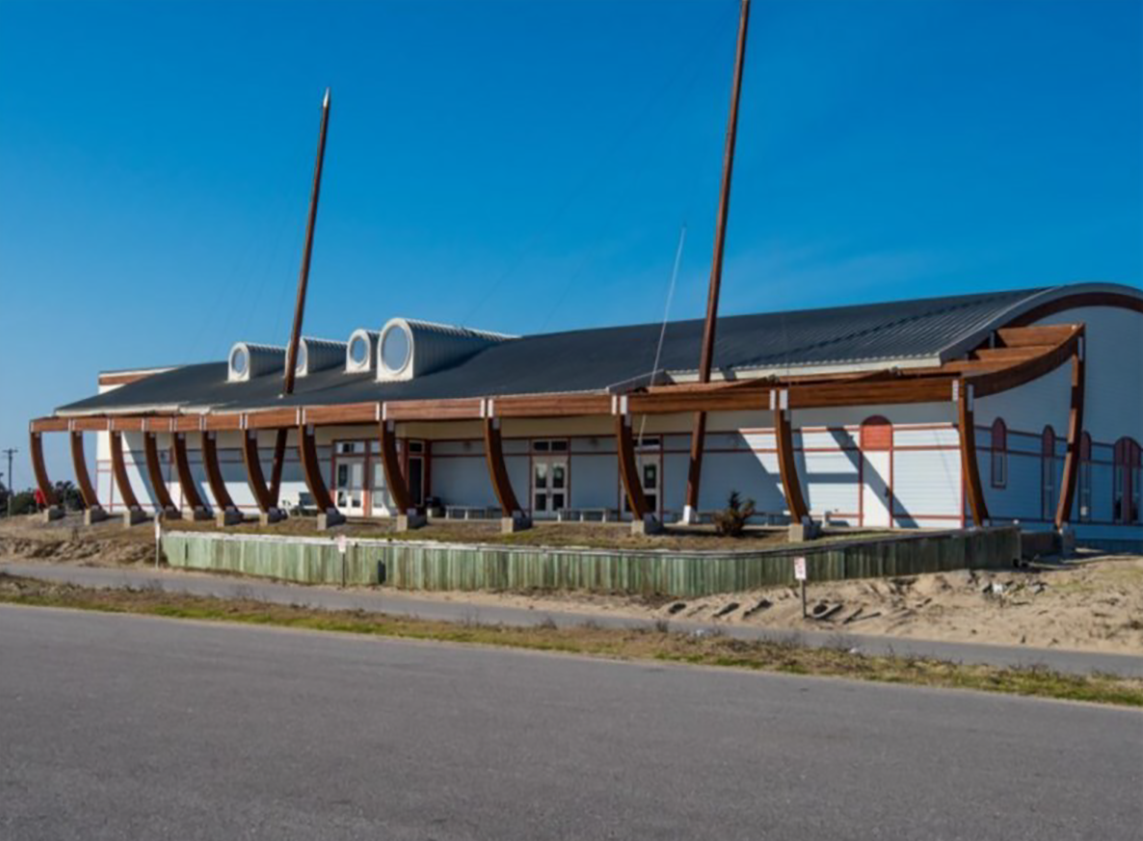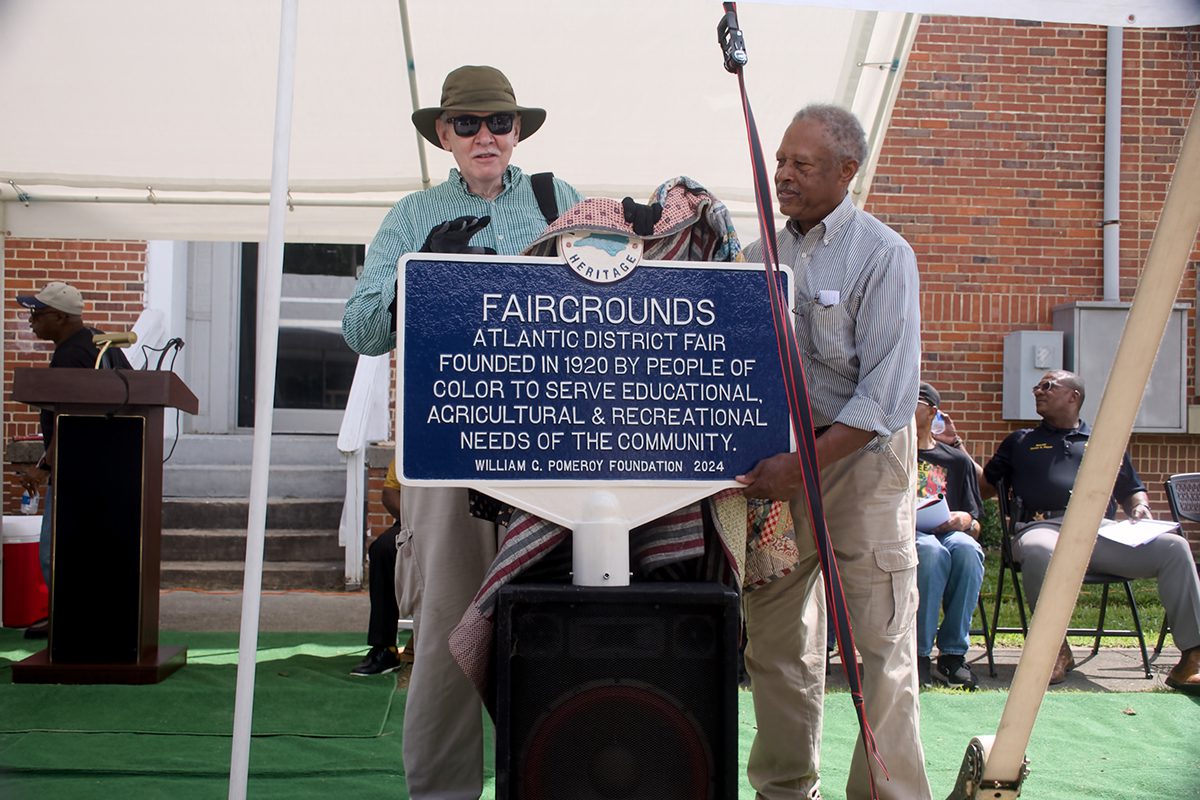
HATTERAS — Thirty years ago, the Graveyard of the Atlantic Museum was officially designated a nonprofit educational organization. That was three years after the maritime museum on the end of Hatteras Island was authorized by Congress, and three years before Congress provided construction funds. But somehow, 13 years after the facility was transferred to the state, money to display its unique artifacts has never been provided.
“It’s the only state facility that the exhibits have gone unfunded,” said Danny Couch, chairman of the board of the nonprofit Friends of the Graveyard of Atlantic Museum, the museum’s support arm. That means that the Graveyard of the Atlantic Museum, is the sole museum in North Carolina without permanent exhibitions.
Supporter Spotlight
This year could be different. For the first time, an appropriation of $4.2 million to implement the state-approved exhibit plan for the museum was included in both the governor’s and the state Senate’s proposed budgets.
“I hope we get the House support,” said Joseph Schwarzer, the museum’s executive director, who has been at the helm since 1995. “It’s been a long time.”
In what could be a bonanza year for the state’s maritime museums, another bill, House Bill 87, that would provide $3 million for a site plan for a new maritime museum at Gallants Channel in Beaufort, is also in the governor’s and Senate’s budgets.
Couch said that state Rep. Bobby Hanig, R-Dare, sent an email to Dare commissioners on June 23 stating that the chair of the state House appropriation committee gave a “favorable” response to inclusion of the museum exhibit funds in the House bill.
Hanig did not respond to a message left on his cellphone seeking information about the bill.
Supporter Spotlight
Jerri Sutton, president of the Maritime Heritage Foundation of Beaufort, is confident that the measure will make it through conference.
“We feel that we’re on track for a joint bill, and will go on to the governor for his signature,” she said.
Schwarzer, who was named director of the North Carolina Maritime Museums in 2012 while maintaining his role in Hatteras, said he wholeheartedly supports a new facility in Beaufort, which he said has outgrown its current downtown location. But the Hatteras museum, he added, has profound Outer Banks coastal history to be told with its artifact collection.
“It’s really incredible,” he said. “It needs to be done.”
About 2,000 ships, or more, representing 400 years of maritime history, are believed to have wrecked off the coast of North Carolina, most of them along the Outer Banks. It is often described as the largest and most important concentration of submerged cultural resources in the Western Hemisphere.
The name “Graveyard of the Atlantic” refers to part of the coastal trade route off Cape Hatteras that required ships to navigate around the treacherous Diamond Shoals, feared for its shallow and shifting sandbars that destroyed hulls and forced vessels to move closer to shore, thus making them more vulnerable to attack.
“These (were) major shipping lanes,” said Couch, a member of the Dare County Board of Commissioners and a Hatteras Island native. “They took evasive maneuvers, trying to make it the most difficult target they could. You wanted to get past the Outer Banks as quick as you could.”
There are four sunken U-boats off the shores of the Outer Banks, where the Battle of the Atlantic raged early in World II, at much cost.
“U-boats were the ultimate stealth weapon,” Coach said. For a time, Germans submarines were sinking an average of a vessel a day — 180 ships in the first six months of the war, Couch said, because the United States had no answer for U-boats.
Storms were also a big factor in the countless shipwrecks spanning hundreds of years buried on beaches or in sound and ocean waters off the coast. Thanks to its proximity to the shipping lanes and its exposed position in the Atlantic, as well as the rich fishing waters of the Gulf Stream, the Outer Banks is a cultural goldmine of maritime history: Native American, Black American, Colonial American, Revolutionary War, Civil War, World War I, World War II, the Age of Piracy, the U.S. Lifesaving Service.
The first transmission from the stricken Titanic was received in Hatteras, as was transmission of the first musical note. The first English child was born on the Outer Banks, and Blackbeard the infamous pirate was killed on the Outer Banks.
Couch said he has been involved with the project practically from the beginning in 1986, when Hatteras villagers first proposed having a museum to house artifacts salvaged from the then-freshly discovered Civil War-era ironclad Monitor. But the state of Virginia was able to build its large Monitor museum first, with the promise to share artifacts with a Hatteras museum when it was built.
Initially, costs for the $7 million, 19,000-square-foot Hatteras museum were provided by project partners the National Oceanic and Atmospheric Administration and the National Park Service, which owns the 7-acre site across from the state ferry docks at the south-western tip of the village. The museum has been opened since 2003, with changing exhibits.
Early on, NOAA provided $600,000 for an exhibit design, but to date the funds for the final exhibition work have fallen through for various reasons, including unexpected events that tapped state budgets. Costs for the final exhibit design started out at about $2.5 million, then it was $2.8 million, then it was $3 million-something, and it crept up steadily as year after frustrating year flew past without securing the funds to finish the museum.
The final exhibit design was approved earlier this year and is sitting in the state construction office, ready to go as soon as the funds are in hand, Couch said.
Despite its limited displays, the museum’s ship-like architectural design is impressive, and the available displays are engaging. In fact, the museum is only growing in popularity, attracting about 90,000 visitors annually, about 23,000 Facebook followers, plus more on other online sites, including its website.
Since 2008, the museum’s nonprofit Friends group has provided $834,791 for facility maintenance and repair, exhibitions, collection, acquisitions and conservation and educational programs, according to the museum.
Hundreds of artifacts, many salvaged from shipwrecks or donated by locals, are stored safely in climate-controlled storage in back of the museum, including donations of 55 rare coins, two of which go back to the time of Ptolemy IV around 221 B.C., collected on Hatteras beaches by a dedicated beachcomber; artifacts salvaged off the U-85 by diver Jim Bunch; and an intact windlass found after Hurricane Irene in Rodanthe near where the Priscilla is believed to have wrecked in 1894. Artifacts are also being held in National Park Service facilities on Roanoke Island and in Florida.
Many islanders —descendants of shipwreck survivors from generations back, members of Coast Guard, fishing or United States Life-Saving Service families, or just folks who found a piece of lighthouse lens when they were teenagers —- have promised to donate their stashed memorabilia or artifacts to the museum once the exhibit plan is completed, Couch said.
The museum is also planning to create an exhibit centered on telling the story of the Carroll A. Deering, better known as the famous “ghost ship,” which was a five-masted schooner that ran aground in 1921 off Cape Hatteras. No sign of the crew was ever found.
Once installed, the exhibit is designed to empower the artifacts to help tell the human story of the Outer Banks’ unusually rich relationship to the sea, Couch said. Whether heart-warming or heart-rending, they’re all dramatic, and they’re all worth telling — and knowing.
“It’s state pride,” Couch said. “It’s just pride in understanding our significance in maritime history. It’s key to North Carolina getting its story out there.”







